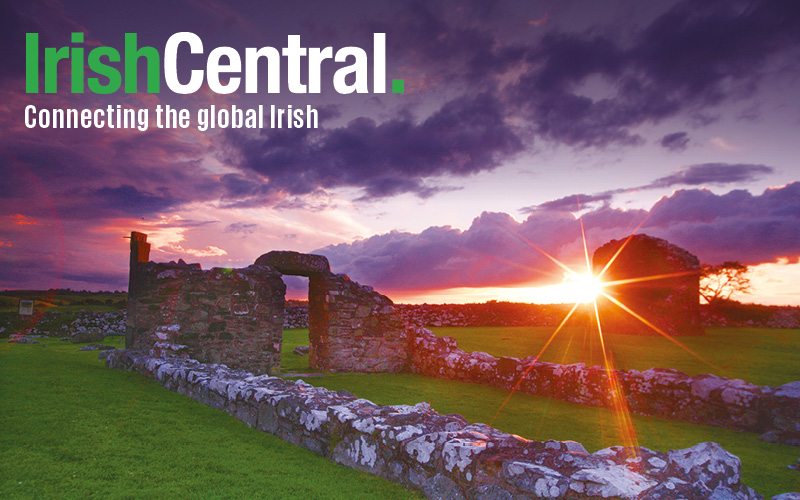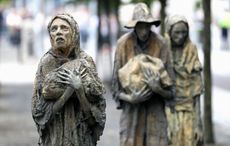An Irish government minister has revealed the “horrific details” of the mass burial site housing up to 800 children and babies at a former religious-run home for unmarried mothers in Galway.
Ciaran Cannon, Minister of State for Education and Skills, spoke out as the Catholic Church began discussions on plans to erect a memorial at the mass grave in Tuam.
The Tuam burial site, much of it in a former septic tank, is located at what was a home for unmarried mothers and their babies run by the Bon Secours Sisters from the 1920s until the 1960s.
Local historian Catherine Corless discovered death records for 796 children from the home, ranging from infants to children up to the age of nine, but there is no record of their burial. Corless then set up a committee to erect a memorial.
Minister Cannon has called for an inquiry to determine the facts surrounding the unmarked burial site, according to the Irish Independent.
He told the paper that any investigation would have to be conducted very sensitively.
He said: “People who are still alive may have disturbing memories of their own or their family’s connections with the institution which was run by the Bon Secours Sisters.”
He said: “Yes, I believe there should be an inquiry into this matter. The evidence to date seems to suggest that something very horrific went on there.
“Let’s try and determine exactly what happened here first of all. Surely, there are people alive who have a connection with the place. I do think an inquiry is required.”
The paper also reports that the head of the Bon Secours Sisters in Ireland has sought a meeting with the Archbishop of Tuam, Dr Michael Neary, to discuss how best to respond to the efforts to honor all those who died.
A spokesperson for Dr Neary confirmed to the Irish Independent that the meeting would take place shortly.
The spokesperson said: “While this isn’t a diocesan matter – it’s a matter for the Bon Secours Sisters – we are of course willing to help this cause.
“There is an excellent committee working locally and to date I think they have raised about €4,000 of the €7,000 [$9,500] they require.
“The Archbishop will be meeting the sisters to discuss the matter of the memorial and also the holding of a memorial service for those who died there. I understand a suitable plaque is planned to contain the names and dates of death of all the 796 children.
“There is nothing in our archives about this. The home closed in 1961 and all the records were handed over to the county council and the health board, I understand.”
The Irish Independent report states that the Tuam site was previously known to be a graveyard.
Locals suspected it was used as a burial ground for unbaptized babies or Famine victims, but it was thought that a small number of children were interred there.
The home closed in the 1960s. In 1975 two boys were playing close to the site when they discovered partially broken concrete slabs covering a disused septic tank, which had been in use prior to the 1920s when the building was a workhouse.
The report says the boys broke the concrete and discovered a hole ‘filled to the brim with bones’.
Ireland’s Adoption Rights Alliance co-founder Susan Lohan has said that her group has anecdotal evidence that babies with disabilities or other health issues – which made them unlikely to be adopted overseas – were not cared for properly and were allowed to die.
Lohan said that amateur research into similar homes in Ireland and Britain is highlighting concerns that need to be investigated fully and immediately.
“Evidence suggests something very horrific went on here.”
By Patrick Counihan
An Irish government minister has revealed the “horrific details” of the mass burial site housing up to 800 children and babies at a former religious-run home for unmarried mothers in Galway.
Ciaran Cannon, Minister of State for Education and Skills, spoke out as the Catholic Church began discussions on plans to erect a memorial at the mass grave in Tuam.
The Tuam burial site, much of it in a former septic tank, is located at what was a home for unmarried mothers and their babies run by the Bon Secours Sisters from the 1920s until the 1960s.
Local historian Catherine Corless discovered death records for 796 children from the home, ranging from infants to children up to the age of nine, but there is no record of their burial. Corless then set up a committee to erect a memorial.
Minister Cannon has called for an inquiry to determine the facts surrounding the unmarked burial site, according to the Irish Independent.
He told the paper that any investigation would have to be conducted very sensitively.
He said: “People who are still alive may have disturbing memories of their own or their family’s connections with the institution which was run by the Bon Secours Sisters.”
He said: “Yes, I believe there should be an inquiry into this matter. The evidence to date seems to suggest that something very horrific went on there.
“Let’s try and determine exactly what happened here first of all. Surely, there are people alive who have a connection with the place. I do think an inquiry is required.”
The paper also reports that the head of the Bon Secours Sisters in Ireland has sought a meeting with the Archbishop of Tuam, Dr Michael Neary, to discuss how best to respond to the efforts to honor all those who died.
** http://www.independent.ie/irish-news/church-to-meet-over-memorial-for-800-babies-at-mass-grave-30321303.html
A spokesperson for Dr Neary confirmed to the Irish Independent that the meeting would take place shortly.
The spokesperson said: “While this isn’t a diocesan matter – it’s a matter for the Bon Secours Sisters – we are of course willing to help this cause.
“There is an excellent committee working locally and to date I think they have raised about €4,000 of the €7,000 [$9,500] they require.
“The Archbishop will be meeting the sisters to discuss the matter of the memorial and also the holding of a memorial service for those who died there. I understand a suitable plaque is planned to contain the names and dates of death of all the 796 children.
“There is nothing in our archives about this. The home closed in 1961 and all the records were handed over to the county council and the health board, I understand.”
The Irish Independent report states that the Tuam site was previously known to be a graveyard.
Locals suspected it was used as a burial ground for unbaptised babies or Famine victims, but it was thought that a small number of children were interred there.
The home closed in the 1960s. In 1975 two boys were playing close to the site when they discovered partially broken concrete slabs covering a disused septic tank, which had been in use prior to the 1920s when the building was a workhouse.
The report says the boys broke the concrete and discovered a hole ‘filled to the brim with bones’.
Ireland’s Adoption Rights Alliance co-founder Susan Lohan has said that her group has anecdotal evidence that babies with disabilities or other health issues – which made them unlikely to be adopted overseas – were not cared for properly and were allowed to die.
Lohan said that amateur research into similar homes in Ireland and Britain is highlighting concerns that need to be investigated fully and immediately.




Comments